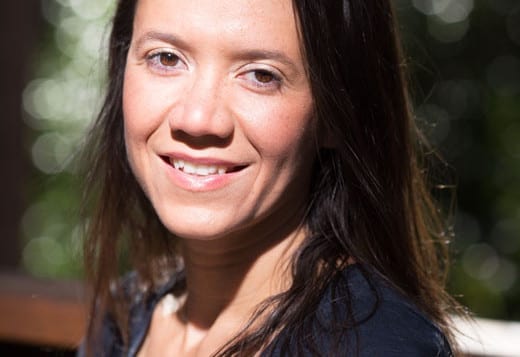By Daniel Dunaief
Mothers of more than one child have blogged about it for years. When they have their second child, the breastfeeding process is often quicker, with milk available sooner than for the first child. Camila dos Santos, who became an assistant professor at Cold Spring Harbor Laboratory in February, has found a reason.
Cells in the mammary gland go through something called epigenetic changes. That means something affects the genetic machinery, causing them to react differently under the same circumstances. In mouse models, dos Santos discovered changes in cell proliferation and milk production genes to the hormones estrogen and progesterone.
When she was a postdoctoral student in Greg Hannon’s laboratory at CSHL, dos Santos said they “decided to profile the epigenome before and after pregnancy.” At first, she was looking for changes associated with the effects of pregnancy on breast cancer development. The recent work, however, described the presence of epigenetic memory of past pregnancies, which influences milk production in the next pregnancy.
The message from these studies was that those areas where she saw changes “are associated with the genes responsible for lactation and the proliferation of the mammary gland during pregnancy,” said dos Santos.
The implications of this research extend from the potential to enhance breastfeeding in women who struggle during lactation to breast cancer.
Indeed, other studies have shown that women who become pregnant before 25 have a lower risk for all types of breast cancer.
“We believe that such strong protective effect must have an epigenetic basis,” dos Santos said. She would like to “understand how this stable, pregnancy-induced epigenome prevents cancer development,” she continued.
Hannon believes the kind of research dos Santos is conducting holds promise.
“The world of breast cancer prevention is badly in need of very solid underlying molecular biology and I think there’s a fair chance that what [dos Santos] is doing will eventually get us there,” said Hannon, who recently left Cold Spring Harbor Laboratory and is now the Royal Society Wolfson Research Professor at the Cancer Research UK Cambridge Institute at the University of Cambridge.
Dos Santos said her research is exploring ways to turn the changes that occur during pregnancies before the age of 25 into a “preventive strategy to treat women that are high risk and even those that are not.”
To be sure, Hannon and dos Santos cautioned, it’s difficult to know how quickly or even whether this kind of research will lead to any treatment or prevention options.
“The main goal of my lab is to try to understand the effects of pregnancy on normal cells, to devise a strategy to prevent breast cancer from arising,” dos Santos said. She recently published her work in the journal Cell Reports.
Dos Santos and Andrew Smith, a computational biologist from the University of Southern California, along with his postdoctoral fellow Egor Dolzhenko discovered that mice that had been through a single pregnancy had methylation marks that were different from mice of the same age that hadn’t been pregnant. The group connected the changes in the genome to a transcription factor called Stat5a. A transcription factor is a protein that acts like a genetic traffic light, turning on or off genes.
When she joined Hannon’s lab in 2008, dos Santos wanted to study gene regulation throughout cell development. It took her three years to purify stem cells.
Hannon credits dos Santos for developing new techniques.
“She had to build the tools she needed to ask” these questions, Hannon said.
Dos Santos lives in campus housing with her husband, Christopher Vakoc, who is an assistant professor at CSHL. The couple take their young sons hiking and can’t wait for the spring and summer because they hike, swim and kayak. Vakoc and dos Santos met when they were in adjoining labs in Philadelphia.
“We used to have joint lab meetings and one day he asked me on a date,” she recalled.
This summer, dos Santos’ lab will include a premed undergraduate student from Hofstra and high school students from Cold Spring Harbor High School and Southampton High School. She recently hired a postdoctoral fellow.
“I envision my lab growing according to my needs,” she said. “Right now, I want to continue to work at the bench while training students and postdocs.”





